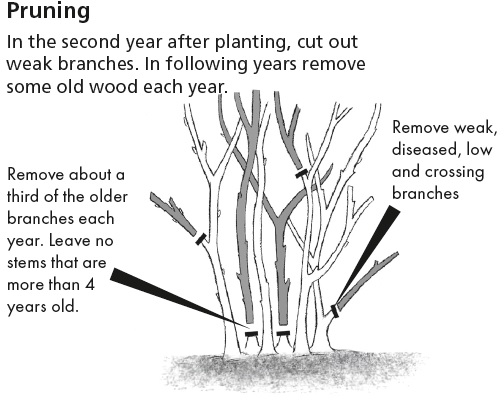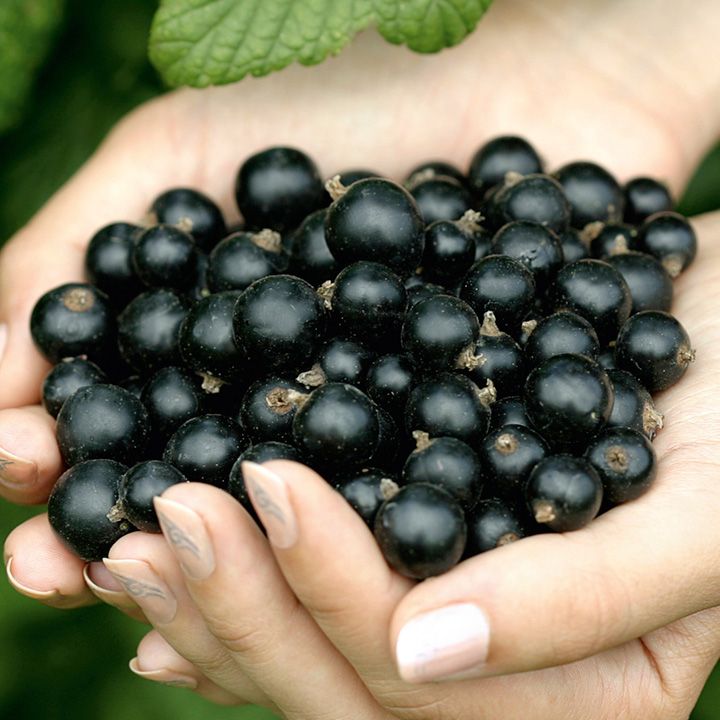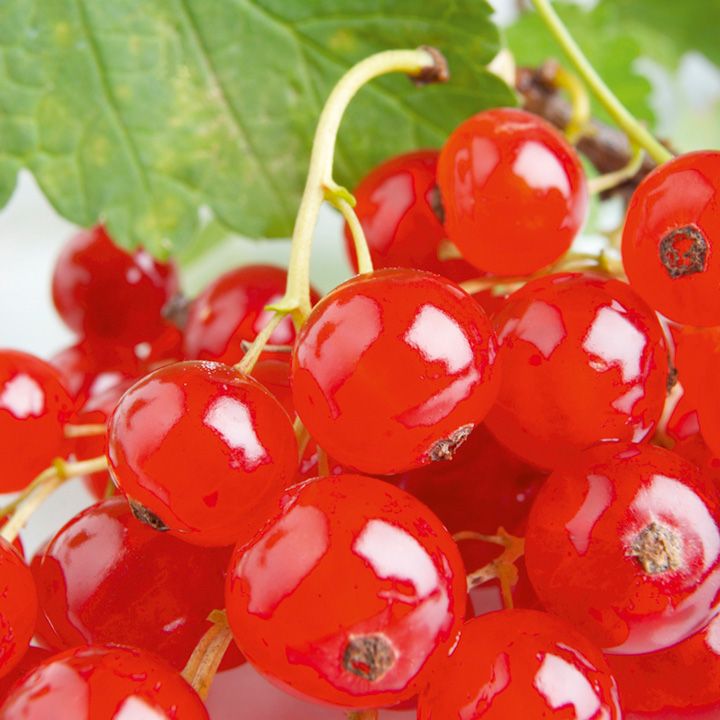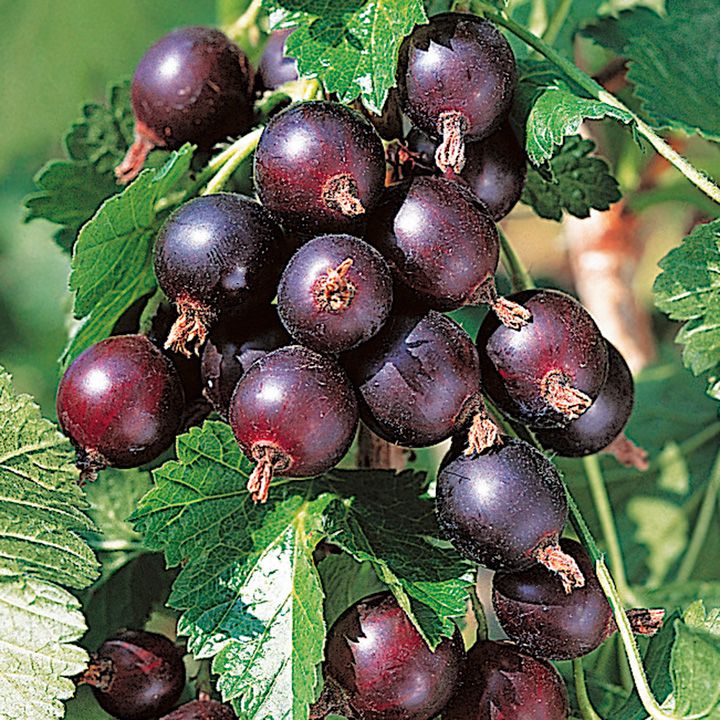Site and Preparation
Blackcurrants prefer a well drained, fertile soil, in a sunny position which is sheltered from cold winds (Do not plant in ‘frost pockets as the flowers are susceptible to frost damage.).
The site should be well worked to a depth of 25cm (10″) incorporating plenty of organic material such as well rotted manure or garden compost. Care should be taken to pick out all roots of perennial weeds. Apply a base dressing of general fertiliser as per the manufacturers recommendation.
Planting
This should take place as soon as possible, provided soil and weather conditions are suitable, e.g. not over wet or frozen. Remove the protective covering from around the roots and soak in water for 20 minutes should they appear at all dry. Dig a planting hole large enough to accommodate roots easily and plant about 2.5cm (1″) lower than it was previously grown in the Nursery, firming the soil well.
Gently tease out the roots of pot grown plants and plant so that they are 2.5–4cm (1–2”) deeper than the compost level. Plants should be spaced 1.2 metres (4′) apart, with a 1.5 metre (5′) space between rows. Immediately after planting, prune each shoot to 2-3 growth buds from the ground. The aim of this is to encourage the production of strong new growth which should appear readily at or from just below soil level. Blackcurrants and Fourberries produce fruit most readily on one year old wood and so these shoots will bear next seasons currants.
Pruning
The aim is to promote an open bush with a continual supply of strong new growth for fruit bearing and removal of aged wood together with any poorly positioned or unhealthy branches. In the winter, following the first season of growth, prune to ground level all weak or damaged shoots. Some pruning can take place after the blackcurrants have been harvested; this should be limited to the removal of inaccessible or damaged branches.

The main pruning is best done in early winter retaining strong new shoots that arise from the base of your bush. If new shoots are plentiful cut out most of the old wood which has fruited otherwise remove a third of these old branches, pruning to a strong young shoot near the base of the bush. In this way, the bush will be completely ‘replaced’ every three years or so. (Note: As an aid to pruning the youngest wood will be mid brown in colour with the oldest wood becoming almost black after a couple of years.)
It is essential to prevent the plants from drying out in the first year. Keep well watered. It may also be necessary to water in dry weather as the fruits begin to swell. Blackcurrants and fourberries respond well to feeding and a winter mulch of well rotted manure or compost will benefit. If aphids become a problem, control with a proprietary treatment.
Redcurrants
These currants have the same basic needs as blackcurrants but do differ in planting depth. Plant at the same depth as the plants enjoyed on the nursery (look for the soil mark on the stem) so that the small stem or leg is above ground. Prune the branches back by half preferably to an outward or upward facing bud.
Pruning
Redcurrants bear fruit on mature wood that is two or more years old. Pruning is therefore relatively simple. As the bush grows remove any shoots that are less than 10cm (4”) from soil level and reduce leading shoots by half to
promote branching. Once the bush has reached the size you want and fruiting has commenced any pruning can be limited to the occasional removal of the oldest branches to ensure that the bush has a good supply of young branches which will bear the largest fruit. At the same time try to maintain an open structure as this will improve fruit ripening and aid picking.
Jostaberries
The jostaberry is a blackcurrant × gooseberry hybrid. It is resistant to American gooseberry mildew, blackcurrant leaf spot and big bud mite. Plant in a sunny, sheltered position as the flowers can be prone to frost damage. The plants grow larger than blackcurrants and should be planted 2m (6ft) apart. Protect the ripening fruit from birds by covering the plant with netting. Prune as you would a blackcurrant, in early winter.





Can a Jostaberry be planted in a container if so what size.